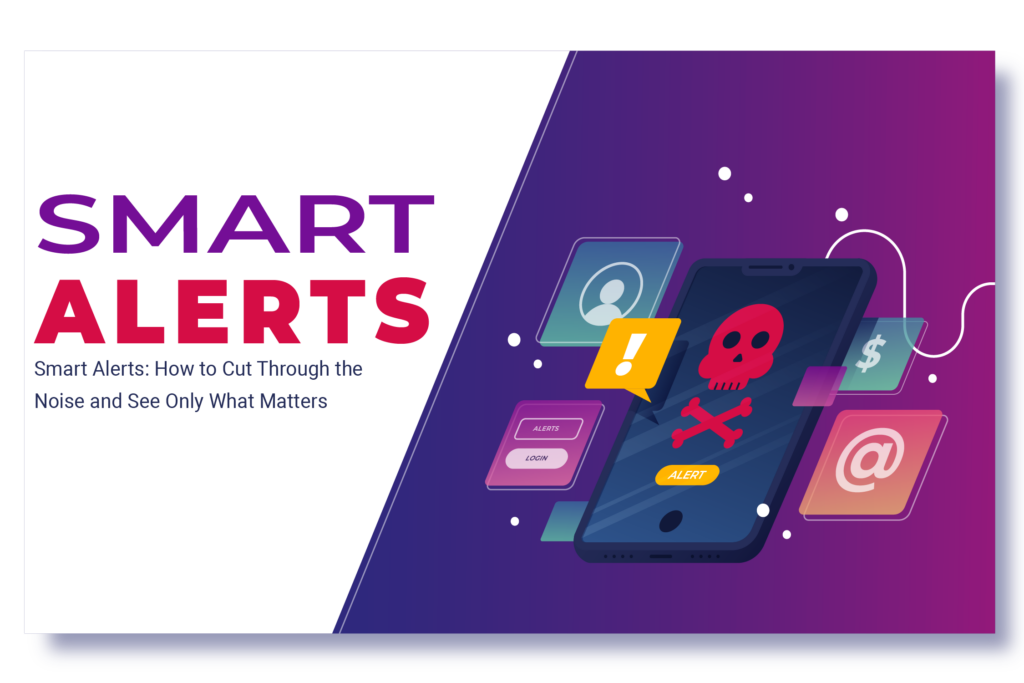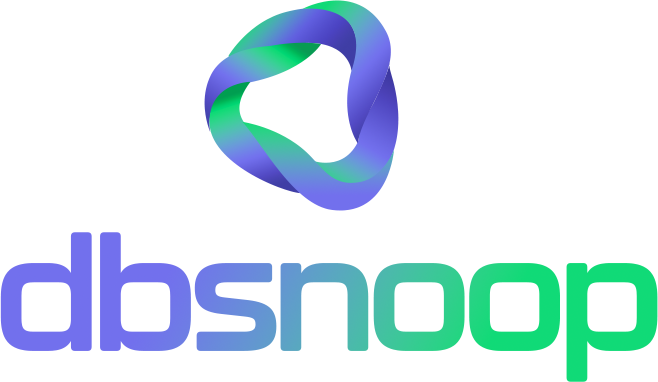

You, DBA, DevOps, SRE, DBE, Tech Lead, or Developer, have you ever found yourself buried under an avalanche of notifications? Those incessant alerts that pop up on your cell phone or in your inbox, many of them irrelevant, end up generating the dreaded “alert fatigue.” Instead of being a useful warning sign, they become mere noise, masking the truly critical problems in your cloud database. This overload not only causes stress but also increases the risk of a serious failure going unnoticed.
But what if it were possible to have a monitoring system that spoke your language, that filtered out the irrelevant and highlighted only what truly matters for the performance, security, and stability of your environment? Imagine receiving alerts that not only inform you about a problem but also provide the necessary context for quick and effective troubleshooting. This article will explore how smart alerts can revolutionize your data management, transforming chaos into clarity and reactivity into proactivity.
The Problem of Alert Noise: Alert Fatigue
The proliferation of monitoring tools and the increasing complexity of cloud environments have led to a common phenomenon: alert fatigue. Your team is constantly exposed to such a large volume of notifications that the ability to discern what is urgent from what is just noise is compromised.
This information overload has serious consequences. Critical alerts can be lost amidst hundreds of low-priority notifications, leading to prolonged downtime and significant business impacts. The time your team spends investigating false or irrelevant alerts is time that could be dedicated to more strategic tasks, such as performance optimization or developing new functionalities.
Furthermore, constant interruption by unnecessary alerts affects team morale, causing frustration and burnout. In an environment where agility is fundamental, such as in DevOps and SRE, inefficiency in alert handling can be a critical bottleneck for operations.
Key Consequences of Alert Fatigue:
- Loss of Critical Alerts: Serious problems go unnoticed.
- Waste of Time and Resources: Teams investigate irrelevant alerts.
- Increased Mean Time to Resolution (MTTR): Difficulty in identifying the root cause.
- Team Stress and Burnout: Negative impact on morale and productivity.
- High Operational Costs: Undetected failures in time generate financial losses.
The Solution: Smart and Contextual Alerts
The transition from a reactive and noisy alert model to a smart alert system is fundamental for the operational health of your database infrastructure. Smart alerts are those that not only trigger a notification but also provide actionable, prioritized, and contextualized information, allowing your team to act efficiently and proactively.

A. Focus on Relevance and Criticality
The first step to having smart alerts is to filter out the noise. This means configuring your system to trigger notifications only for events that truly matter, based on their criticality and potential business impact. It’s not about having more alerts, but about having the right alerts.
A relevant alert must be able to distinguish between a normal fluctuation in database performance and anomalous behavior that indicates a real problem. This requires the ability to establish baselines and detect significant deviations, avoiding false positives that wear down the team.
Furthermore, prioritization is fundamental. Not every alert has the same urgency. An intelligent system classifies notifications by impact level, ensuring that your team is immediately alerted about critical security or performance failures that can bring down the system, while minor problems can be handled on a different schedule.
B. Context is King: Understand the Problem Quickly
Receiving an alert about “high CPU” on your database is just the beginning. For a DBA or an SRE engineer, the real value lies in understanding the context: which SQL query caused the spike? Which application is connected? Was there any recent change in the cloud that might have influenced it?
Smart alerts are enriched with relevant data. They correlate information from different sources – performance metrics, event logs, application traces – to offer a complete view of the problem the moment it occurs. This drastically speeds up troubleshooting, eliminating the need for your team to spend valuable time manually collecting and correlating data.
With the right context, your team can diagnose the root cause of a problem in minutes, instead of hours. This means less downtime, less stress, and a much faster recovery, directly impacting the performance and availability of your services.
C. Automation and Proactive Actions
Smart alerts are not limited to notifying; they can also be the trigger for automated and proactive actions. In a DevOps environment, automation is crucial for operational efficiency and system resilience.
Imagine an alert that not only informs about an increase in query latency but also suggests (or even executes) an index optimization. Or a security alert that, upon detecting an unusual access pattern, automatically blocks the source IP and notifies the responsible team.
The ability to predict problems before they occur is the pinnacle of proactivity. Smart alerts can use predictive analytics and machine learning to identify trends and anomalies that indicate a potential future failure, allowing your team to act preventively and avoid interruptions even before they manifest.
How dbsnOOp Transforms Your Alerts into Actionable Intelligence
This is where dbsnOOp positions itself as an essential solution for DBA, DevOps, SRE, DBE, Tech Leads, and DEV teams looking to overcome alert fatigue and optimize data management in the cloud. dbsnOOp was designed to deliver smart alerts that truly matter.
dbsnOOp goes beyond basic monitoring, using artificial intelligence and machine learning to analyze your database’s behavior. This allows it to identify anomalous patterns and predict performance or security problems before they become critical, sending alerts only when necessary.
Our platform enriches each alert with full context. When detecting a slowdown in a query, for example, dbsnOOp immediately shows which SQL is involved, which users or applications are being affected, and the recent performance history of that element. This contextualization exponentially speeds up troubleshooting.
With dbsnOOp, you have granular control over your alert configuration, ensuring that only the most relevant notifications reach your team. This significantly reduces noise, allowing your professionals to focus on what truly matters and improve the environment’s observability.

Benefits of Smart Alerts with dbsnOOp:
- Reduced Alert Fatigue: Less noise, more focus on real problems.
- Faster Diagnosis: Complete context for agile troubleshooting.
- Failure Prevention: Proactive identification of anomalies and trends.
- Performance Optimization: Alerts that direct to specific improvements.
- Enhanced Security: Detection and alert about suspicious behaviors.
- Increased Team Productivity: More time for innovation, less for firefighting.
The Impact on Your Business: More Efficiency, Less Stress
The implementation of smart alerts with dbsnOOp is not just a technical improvement; it is a strategic transformation that directly impacts your company’s bottom line.
First, there is a significant reduction in operational costs. By preventing failures and accelerating troubleshooting, you minimize downtime, which translates into fewer financial losses and lower cloud resource consumption.
Second, your team becomes exponentially more productive. Free from the constant distraction of irrelevant alerts, your DBAs, DevOps, and SREs can dedicate their talent and energy to innovation, optimization, and development projects, generating more value for the business.
The security of your database is drastically strengthened. With smart alerts that detect anomalous patterns and suspicious behaviors, you can act proactively against threats, protecting your data and your company’s reputation.
Finally, your customer experience improves. With a more stable and high-performance system, applications run more smoothly, ensuring user satisfaction and driving retention and growth.
Prepare for a Future Without Monitoring Noise
The era of reactive and noisy monitoring is coming to an end. For companies seeking operational excellence, resilience, and competitive advantage in the cloud, adopting smart alerts is a fundamental step. With dbsnOOp, you not only cut through the noise but transform your alerts into a powerful tool for actionable intelligence, ensuring that your team sees only what truly matters and acts decisively.
Want to solve this challenge intelligently and ensure high performance for your database? Schedule a meeting with our specialist or watch a practical demonstration!
Schedule a demo here.
Learn more about dbsnOOp!
Learn about database monitoring with advanced tools here.
Visit our YouTube channel to learn about the platform and watch tutorials.


